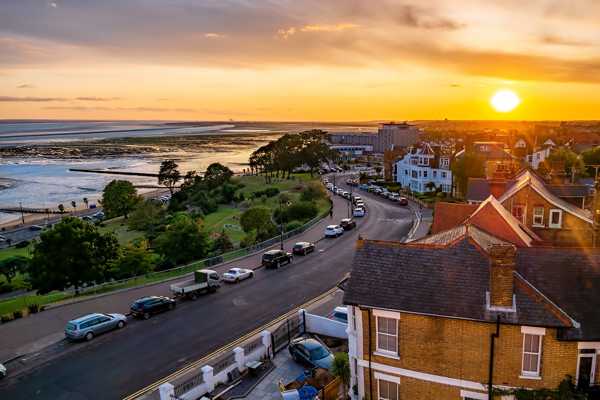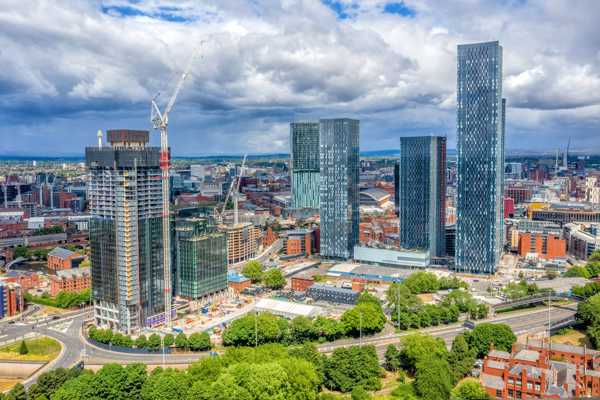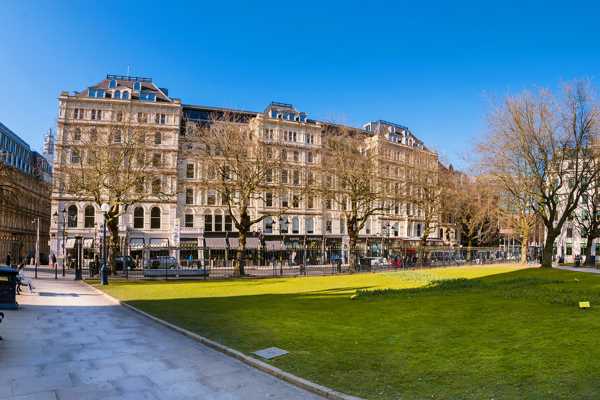Take a road trip to the picturesque villages of Essex, most of which reflect the county’s agricultural history. Many feature windmills, some still in working order, and are surrounded by fields of golden wheat and blue linseed. Filled with thatched cottages and centuries-old pubs, it’s easy to find yourself in a place untroubled by over-tourism.
Somehow, this place still manages to fly under the radar in the travel press, yet many of its most picturesque spots can be reached from London in little more than an hour. Visit Essex for a 43-acre village green – largest in the UK – at Great Bentley, the world’s oldest timber-framed barn at Cressing Temple and a thousand-year-old wooden church in Greensted. But, above all, you should come to these picturesque villages to enjoy the pretty rural scenery over a traditional afternoon tea or a pint or 2 of real ale.
- 1
Stock
Drink real ale in one of several village pubs

- Makanan
- Sejarah
- Foto
Stock is a genteel village on the edge of Chelmsford that's as well-connected as it is charming. A windmill is tucked away on the edge of the village while the pretty All Saint's Church, first recorded in 1232, occupies a more prominent position beside the main road.
Food and drink draw many to the village. Of the 3 remaining pubs (there was a fourth that’s now a hotel), The Hoop is the oldest. It was originally 3 weavers’ cottages, built in 1460. The beams that give the pub much of its present-day character were salvaged from warships that docked at Tilbury on the Thames. Each May, the Hoop hosts a popular beer festival, with plenty of real ale to sample.
Lokasi: Stock, Essex, UK
Petafoto dari Chris Morgan (CC BY-SA 2.0) dimodifikasi
- 2
Finchingfield
Picnic on the village green beside the duck pond

- Sejarah
- Foto
Finchingfield is one of the prettiest villages in rural north-west Essex. Behind an attractive village green, you’ll see the only remaining windmill of 7 that once formed part of the landscape here. It’s one of the county’s 2 oldest windmills – Great Bardfield residents claim theirs is older but it’s a close call.
There are several buildings of particular interest when you’re ready to shake the crumbs off your picnic blanket and stretch your legs. Near the church is the Guildhall, built about 1500 but converted into a school and almshouse a couple of centuries later. Pepper Pot Cottage was chosen as one of the models in the popular Lilliput Lane range of collectables. 101 Dalmatians author, Dodie Smith, lived here too, in a house on the edge of the village.
Lokasi: Finchingfield, Braintree, Essex, UK
Peta - 3
Coggeshall
Visit a village with an agricultural and industrial past

- Sejarah
- Foto
Historic Coggeshall is a small, picturesque town in North Essex, best known for its 2 National Trust properties. Paycocke’s is a delightful home with ornate panelling – it was built by a merchant in the 16th century on the proceeds of the wool trade. Grange Barn, on the edge of the village, is one of the country’s oldest agricultural barns, originally used to store tithes paid in corn for the Abbots of Coggeshall.
There are plenty of endearing tales about how Coggeshall residents used to be a bit dim – not true of its present inhabitants, of course. But in the past, villagers set off for Colchester to collect a missing chime for the village clock, winched a cow onto the church roof to graze the grass that was growing there and knocked down one of the 2 windmills because it was thought there wasn’t enough wind to power both.
Lokasi: Coggeshall, Colchester, Essex, UK
Peta - 4
Wendens Ambo
Take a stroll past the thatched cottages of this chocolate box village

- Sejarah
- Foto
Wendens Ambo is a small village set in attractive countryside in Uttlesford, Essex. The village's name is indeed a peculiar one, even by Essex standards – and that’s in a county that also boasts Messing, Mucking and Ugley. Ambo means both; today’s village was, before 1662, 2 separate settlements.
Wendens Ambo dates from at least Roman times – there are the remains of a villa – and probably earlier as archaeologists found flint tools. But the main draw is the quintessentially English thatched cottages and half-timbered houses painted in shades of pastel pink, blue and lemon. On summer days, when the sun is shining and the trees are in leaf, it’s one of the loveliest spots anywhere in Essex.
Lokasi: Wendens Ambo, Saffron Walden, Essex, UK
Petafoto dari Marathon (CC BY-SA 2.0) dimodifikasi
- 5
Wrabness
Check out a house designed by the most famous cross-dresser in Essex

- Sejarah
- Foto
Wrabness is a small village overlooking the Stour Estuary and a nature reserve of the same name in northern Essex. Artist Grayson Perry decided Wrabness was the perfect location for his conceptual holiday home known as A House for Essex. This quirky and colourful home, a modern take on a romantic gingerbread house, stands not in woodland but surrounded by arable fields. Its proximity to the Stour makes it easy to combine a visit with a ramble along the riverbank.
Entirely different is the village church. You’ll find something very unusual in the graveyard. The tower collapsed in the 17th century, so its bell was placed in a wooden cage on the ground. Though it was supposed to be a temporary measure, it remains there to this day.
Lokasi: Wrabness, Manningtree, Essex, UK
Petafoto dari Chris Holifield (CC BY-SA 2.0) dimodifikasi
- 6
Tolleshunt D’Arcy
Bring Margery Allingham’s detective books to life

- Sejarah
- Foto
Tolleshunt D’Arcy is a pretty village a few miles north-east of Maldon district in Essex. Sleepy and well-to-do, its centuries-old homes with their brick façades and tiled roofs are a treat for the eye. On the face of it, Tolleshunt D’Arcy is a poor location choice for a writer of crime thrillers. But that didn’t stop 20th-century author Margery Allingham, who created detective Albert Campion, from using her village as the setting for her book, The Oaken Heart.
The village also boasts its own variety of apple. The D’Arcy Spice was first grown around 1785 in the grounds of D’Arcy Hall, though since 1848 some have referred to it as the Baddow Pippin. Whatever you call it, you might spot some growing nearby if you time your visit for the right season.
Lokasi: Tolleshunt D’Arcy, Maldon, Essex, UK
Petafoto dari Rwendland (CC BY-SA 3.0) dimodifikasi
- 7
Ashdon
Uncover the events that shaped this village’s long history

- Sejarah
- Foto
Ashdon is a rural community in the north-west of Essex, known for its weatherboard Bragg’s Mill that was constructed in 1757. But the mill is far from the oldest structure to be associated with the village. About 2 miles to the north lay the Bartlow Hills, Iron Age burial mounds which, until the boundaries were redrawn in 1990, belonged to Ashdon rather than Cambridgeshire.
Some historians think that Ashdon (rather than Ashingdon near Rochford) is the site of the Battle of Assandun. It was a significant event where Canute the Great defeated the English army to effect the Danish reconquest.
Lokasi: Ashdon, Saffron Walden, Essex, UK
Petafoto dari Robert Edwards (CC BY-SA 2.0) dimodifikasi
- 8
Castle Hedingham
Develop mediaeval skills at a Norman castle

- Keluarga
- Sejarah
- Foto
Castle Hedingham is, as its name suggests, is a village in northeast Essex that's known for its castle that was built in Norman times by the House of de Vere. Their ambitious plans for the village didn’t stop there – they were also responsible for a nunnery, hospital and market.
Today’s thatched cottages and historic buildings, including the Georgian house that’s part of the castle estate, make this an ideal day out. Visitors can tour the castle’s tower and mediaeval interiors but most fun is the special events – try your hand at jousting, falconry, archery and even alchemy.
Lokasi: Castle Hedingham, Halstead, Essex, UK
Petafoto dari Derek Voller (CC BY-SA 2.0) dimodifikasi
- 9
Tillingham
Discover the village’s literary connection

- Sejarah
- Foto
Tillingham, with its clapboard houses, 12th-century church and village green, is the jewel of the crown in Essex’ Dengie peninsula. Centuries ago, the vicar here locked up a pregnant young girl called Mary Adams who claimed to be the Virgin Mary; her baby was stillborn and deformed, so the village earned notoriety as “The Ranter’s Monster”.
Backed by marshes and surrounded by farmland, its bucolic setting is perfect for walkers keen to get away from urban hustle and bustle for a while. The village drew the attention of H.G. Wells, who refers to it in his novel The War of the Worlds as the place where the narrator’s brother flees the Martian invasion.
Lokasi: Tillingham, Southminster, Essex, UK
Petafoto dari Dr Neil Clifton (CC BY-SA 2.0) dimodifikasi
- 10
Felsted
Lay eyes on the school where Oliver Cromwell sent his sons to be educated

- Sejarah
- Foto
Felsted, or Felstead, is a thriving village in the district of Uttlesford in Essex that has managed to retain its 16th-century charm. The rural village is known for its highly regarded public school, which dates back to 1564. Among its distinguished alumni are news broadcaster Kenneth Kendall, American planter William Byrd II who founded Richmond in Virginia, and 2 of Oliver Cromwell’s sons.
The Flitch Way, a 15-mile country park trail, passes Felsted on land that used to be the Bishop’s Stortford to Braintree railway line. The trail takes its name from the Flitch trials in nearby Dunmow, during which couples compete to prove they have not argued for a year and are therefore worthy of the prize, a side of bacon. One of the best stretches for birds, butterflies and wildflowers links Felsted and Rayne. Felsted’s two pubs, the Swan Inn and the Chequers are ideal pitstops for refreshments for those walking the route.
Lokasi: Felsted, Dunmow, Essex, UK
Petafoto dari Acabashi (CC BY-SA 4.0) dimodifikasi



















